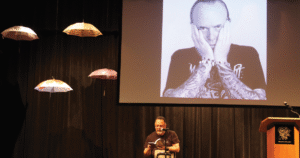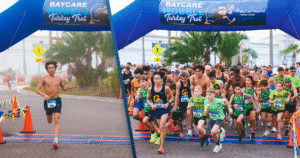Public transportation accommodation, utilizing overpasses to cut down on intersection congestion, express lanes and even the potential of toll roads and rail are all included in concepts that could greatly improve the traffic on S.R.s 54 and 56, as Phase I of the “Vision 54/56” study is all but complete and headed to the Pasco County Metropolitan Planning Organization (MPO).
“Hopefully, they will tell us to move forward to Phase II,’’ says Pasco transportation engineer Ali Atefi.
In Phase II, the MPO would be looking at five alternative intersection improvements — a no-build alternative will not be forwarded — that could have an eventual effect on Wesley Chapel, specifically at S.R. 54 and Wesley Chapel Blvd. and at S.R. 56 and Bruce B. Downs (BBD) Blvd.
If the MPO approves, Phase II will see the Vision 54/56 Taskforce look at further modifications while fleshing out more details and also studying other alternatives. Phase II also will involve broader public involvement, including online surveys.
Other aspects of improving the 54/56 corridor, such as meeting federal requirements for environmental standards and the effects on local businesses and properties, as well as funding, will be tackled during a later phase.
“We’re not getting into funding yet, that’s for a different time,’’ Atefi says. “At this point, the objective is to figure out what people want 54 to look like.”
Atefi stresses that the existing six lanes of S.R. 54/56 will stay the way they are and will always be free of charge, although some alternatives could involve additional toll roads or express lanes.
“There could be exclusives lanes for busses or there can be a rail at this point, we don’t know,’’ Atefi says. “In all cases, we are keeping the existing six lanes. We will keep it the way it is, free of charge. Anything we add will be an addition to what people already have.”
Studying The Studies
As part of the MPO’s “Mobility 2040” Long Range Transportation Plan (LRTP), the Vision 54/56 study has been conducted using two task forces: one to study the corridor east of U.S. 41 to Bruce B. Downs (which includes the Wesley Chapel area), and another to study the area from U.S. 41 west to U.S. 19.
Prior to the study, Atefi said Pasco’s population is expected to grow to 905,000 by 2040 (from the current population of 490,000), and 135,000 of those new residents are expected to move into the S.R. 54/56 corridor.
“That’s 35-percent of the county’s growth,” Atefi says. “Imagine if development moves faster.”
Each Task Force was comprised of nine individuals from local Chambers of Commerce and civic groups. The task force that represented Wesley Chapel included Greater Wesley Chapel Chamber of Commerce (WCCC) CEO Hope Allen, Sandy Graves of the Central Pasco Chamber of Commerce (CPCC), Steve White of the Pasco Alliance of Community Associations (PACA), the Pasco Economic Development Council (EDC)’s Brent Nye (who is also a member of the Wesley Chapel Noon Rotary Club), project developer Joe Cimino, MPO Citizen Advisory Committee members Christie Zimmer and Rob Sercu, as well as citizens-at-large Debby Catanzaro and former Wesley Chapel Noon Rotary president Kelly Mothershead.
“It was an honor to serve on this task force,’’ Allen said recently. “We are literally paving the way to our fu ture…One major sticking point for me was to ensure whatever alternatives we presented, fit well with the overall master plan for our region.”
ture…One major sticking point for me was to ensure whatever alternatives we presented, fit well with the overall master plan for our region.”
At their March 31 meeting, the East Task Force concluded its survey results, with Alternative H — which calls for maintaining six general purpose lanes and an At Grade (ground level) exclusive land for BRT or rail transportation – receiving the highest marks.
“This was the only truly At Grade alternative where there is no elevated structure involved,’’ says Atefi.
Alternative J, which called little or no action on the corridor, just maintaining the six lanes already in existence and maintaining local bus routes, scored second-highest.
 Alternative F, modeled after much of the work on U.S. 19 in Pinellas County (Clearwater in particular) in which an overpass would feature six east-west lanes, but be subject to either a toll lane or express lane with high-occupancy rules, was the third choice of the task force
Alternative F, modeled after much of the work on U.S. 19 in Pinellas County (Clearwater in particular) in which an overpass would feature six east-west lanes, but be subject to either a toll lane or express lane with high-occupancy rules, was the third choice of the task force
Alternative B did not score in the top 3, but might be the most ambitious of the alternatives. It features six lanes of traffic going in both east and west directions, with one additional express lane which busses could also utilize. Because is it elevated, Alternative B also includes a facility/tower for pedestrians to reach the overpass so they can ride public transportation.
Like Alternative F, Alternative B’s express lanes would need to be enforced to make it effective.
 “You cannot have an express lane everybody uses, so you have to (enforce) special things, like all express lanes have to be high-occupancy vehicles (2-3 passengers) or, say you have to pay a toll,’’ Atefi says. “It has to be a special thing so you keep the integrity of express lanes intact.”
“You cannot have an express lane everybody uses, so you have to (enforce) special things, like all express lanes have to be high-occupancy vehicles (2-3 passengers) or, say you have to pay a toll,’’ Atefi says. “It has to be a special thing so you keep the integrity of express lanes intact.”
The task forces met over the course of seven months at Rasmussen College (off S.R. 54) in Land O’Lakes. Atefi says that many on the east task force have expressed interest in continuing forward in Phase II.
“On a scale of 1-10, I would rate it as a 10,’’ Atefi says of the task force’s work so far. “We educated them, they learned and they accomplished what we wanted them to accomplish. I can’t complain.”
For more information, please visit Vision54-56.com.




No comment yet, add your voice below!